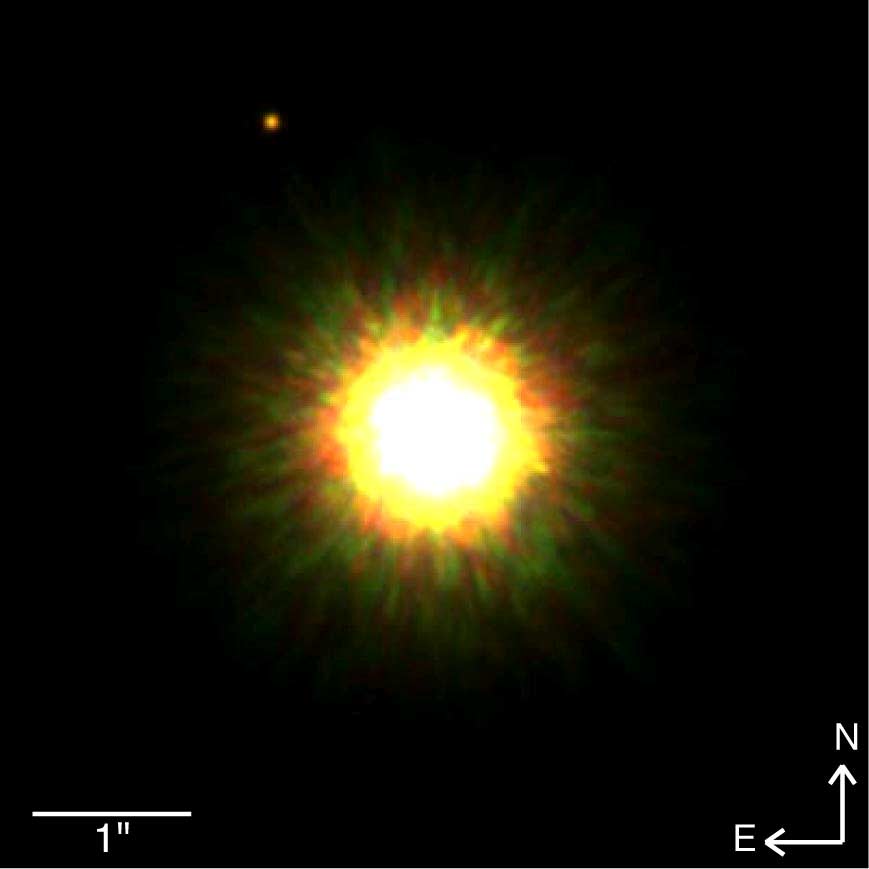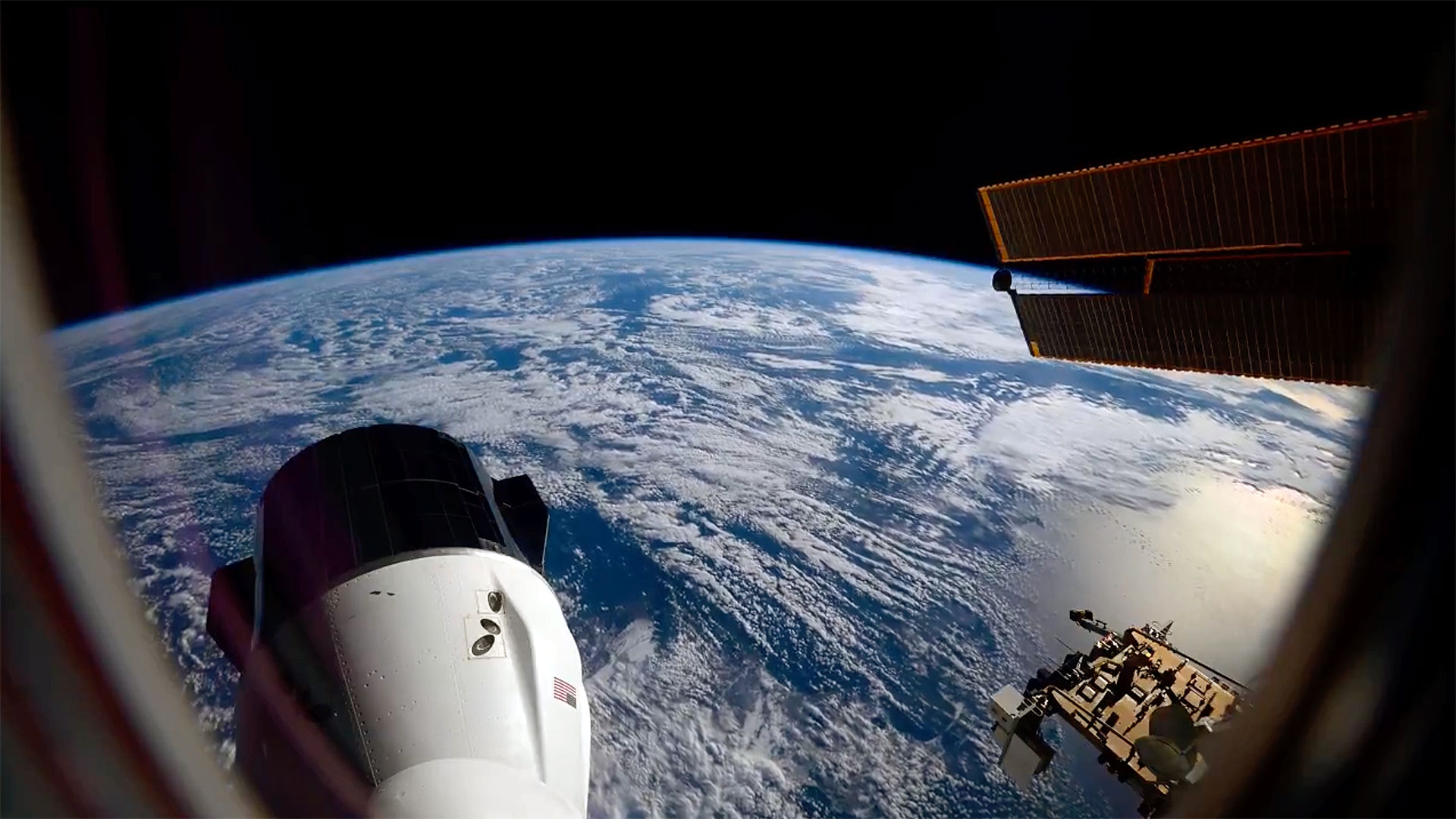First Direct Photo of Alien Planet Finally Confirmed

A planet outside of our solar system, said to be the first ever directly photographed by telescopes on Earth, has been officially confirmed to be orbiting a sun-like star, according to follow-up observations.
The alien planet is eight times the mass of Jupiter and orbits at an unusually great distance from its host star — more than 300 times farther from the star than our Earth is from the sun.
Astronomers first discovered the planet in 2008 using visible light observations from telescopes on Earth, making it the first direct photo of an extrasolar world. But at the time there was still the remote chance that it only looked like it was orbiting the star, from the perspective of Earth, due to a lucky alignment of object, star and observer.
"Our new observations rule out this chance alignment possibility, and thus confirms that the planet and the star are related to each other," said astronomer David Lafreniere, who led the research team that discovered the planet.
The new observations that confirm the planet circles its parent star were made using high-resolution adaptive optics technology at the Gemini Observatory. The observatory is an international collaboration with two identical 8-meter telescopes, located at Mauna Kea, Hawaii and Cerro Pachon in northern Chile.
Planet around young star
The host star, which has an estimated mass of about 85 percent that of our sun, is located approximately 500 light-years away in a group of young stars called the Upper Scorpius Association that formed about 5 million years ago.
Breaking space news, the latest updates on rocket launches, skywatching events and more!
The planet has an estimated temperature of over 2,700 degrees Fahrenheit (about 1,500 degrees Celsius). This makes the planet much hotter than Jupiter, which has an atmospheric cloud-top temperature of approximately minus 166 degrees Fahrenheit (minus 110 degrees Celsius).
The relatively young age of the system — our solar system is 4.6 billion years old — explains the high temperature of the planet, according to the researchers. [The Strangest Alien Planets]
The contraction of the planet under its own gravity during its formation quickly raised its temperature to thousands of degrees. But, once this contraction phase is over, the planet will slowly cool down by radiating infrared light. Within billions of years, the planet will eventually reach a temperature that is much more similar to that of Jupiter.
Tale of a planet find
Lafreniere and his research team firstannounced their planet's discovery in September 2008. At the time he was at the University of Toronto, but is now at the University of Montreal and Center for Research in Astrophysics of Quebec.
In 2008, the researchers claimed that the discovery also represented thefirst picture of a planet that orbits around a star similar to our sun. Other astronomers have also made similar claims, including a 2004 discovery of an object that could be a planet or a type of failed star called a brown dwarf.
"Back in 2008 what we knew for sure was that there was this young planetary mass object sitting right next to a young sun-like star on the sky," Lafreniere said.
The close proximity of the two cosmic objects seemed to suggest that they were associated with each other, but there was a possibility — albeit unlikely — that they were unrelated and had only aligned in the sky by chance. One of the objects might have been closer or farther by considerable distance. So more observations were required to confirm the cosmic find.
The results of the study will be published in an upcoming issue of The Astrophysical Journal.
The system, known as 1RXS J160929.1-210524 (or 1RXS 1609 for short), will give scientists a unique example to study, as its extreme separation from the star seems to challenge common planetary formation theories.
"The unlikely locale of this alien world could be telling us that nature has more than one way of making planets," said the study's co-author Ray Jayawardhana of the University of Toronto. "Or, it could be hinting at a violent youth when close encounters between newborn planets hurl some siblings out to the hinterlands."
The team of astronomers initially detected the exoplanet using the Gemini Observatory in April 2008, which made it the first likely planet known to orbit a sun-like star that was revealed by direct imaging. At the time, the researchers also obtained a spectrum of the planet and were able to determine many of its characteristics, which are confirmed in the new study.
"In retrospect, this makes our initial data the first spectrum of a confirmed exoplanet ever!," Lafreniere said.
The spectrum illustrates absorption features due to water vapor, carbon monoxide and molecular hydrogen in the planet's atmosphere.
Other distant planets photographed
This is not the only exoplanet to be discovered using direct imaging.
Since initially observing 1RXS 1609, several other alien worlds have also been found, including a system of three planets that orbit around the star HR 8799. This discovery was also made using the Gemini Observatory.
The latest exoplanet confirmation is unique, however, because the planets around HR 8799 orbit much closer to their host star.
The study of 1RXS 1609 also verified that no additional large planets (between one and eight times the mass of Jupiter) are present in the system that are closer to the star.
Future observations may reveal evidence on the origin of thestrangely far-out planet. In fact, within a few years, it should be possible to detect a slight difference in the motion of the planet and its star, due to their mutual orbits.
This difference, however, will be "very small," said the study's co-author Marten van Kerkwijk of the University of Toronto, since the fastest possible orbital period is more than one thousand years.
Clocking alien planet's speed
But, using Gemini, it is possible to precisely measure the velocity of the planet relative to its host star.
This can help astronomers determine whether the planet is following a roughly circular orbit — as would be expected if it really formed far from its host star — or whether it is in a very non-circular or even unbound orbit. The latter could be the case if it formed closer to the star but was kicked out as a result of an encounter with another alien planet, researchers said.
The adaptive optics system on the Gemini telescopes were crucial to making the observations of 1RXS 1609.
"Without adaptive optics, we would simply have been unable to see this planet," Lafreniere said. "The atmosphere blurs the image of a star so much that it extends over and is much brighter than the image of a faint planet around it, rendering the planet undetectable. Adaptive optics removes this blurring and provides a better view of faint objects very close to stars."
- Gallery - Strangest Alien Planets
- Top 10 Extreme Planet Facts
- Hundreds of Possible Alien Planets Discovered By NASA Spacecraft

Denise Chow is a former Space.com staff writer who then worked as assistant managing editor at Live Science before moving to NBC News as a science reporter, where she focuses on general science and climate change. She spent two years with Space.com, writing about rocket launches and covering NASA's final three space shuttle missions, before joining the Live Science team in 2013. A Canadian transplant, Denise has a bachelor's degree from the University of Toronto, and a master's degree in journalism from New York University. At NBC News, Denise covers general science and climate change.
